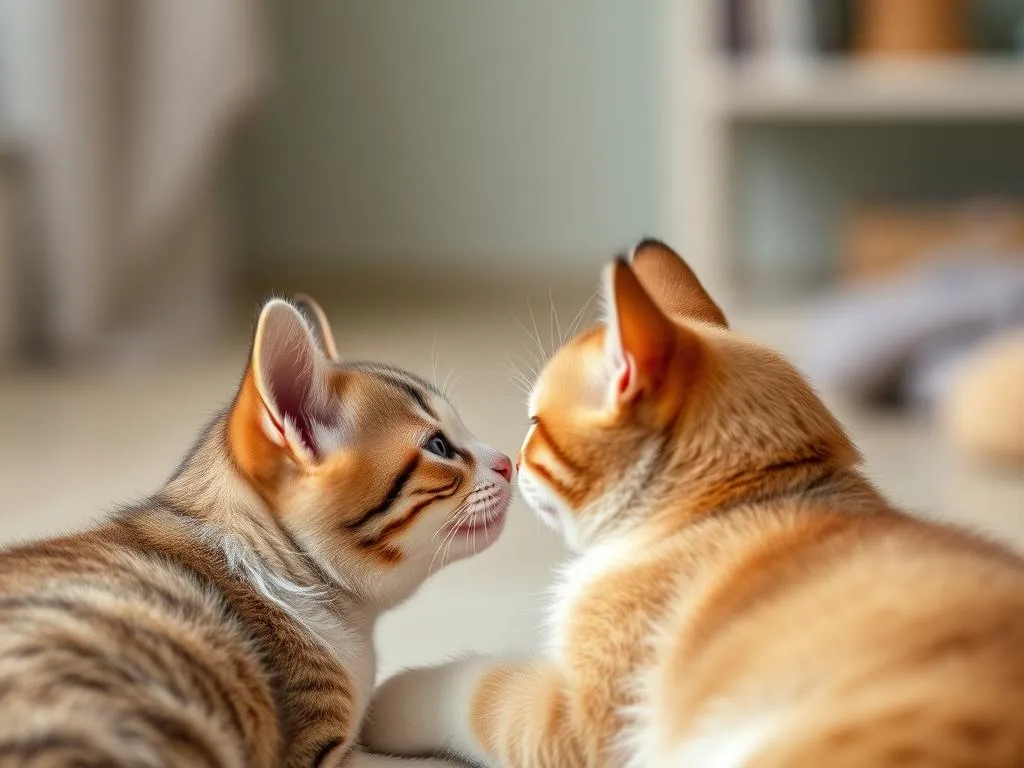
Introducing a puppy to cats can be a daunting task for many pet owners. Understanding how to create a harmonious household where both pets can coexist peacefully not only enhances their quality of life but also enriches your own. However, navigating the unique behaviors and temperaments of both species requires patience, preparation, and the right techniques.
Understanding Pet Behavior
Canine vs. Feline Behavior
Dogs and cats exhibit vastly different behaviors. Puppies tend to be playful, curious, and social creatures. They often approach new experiences with enthusiasm and may see cats as potential playmates. On the other hand, cats are typically more independent and territorial. Their initial reaction to a new puppy may be one of wariness or even fear.
Understanding these differences is crucial when planning your introduction. Recognizing that your puppy’s exuberance may be perceived as a threat by your cat can help mitigate stress during the adjustment period.
The Psychology of Pets
The way dogs and cats perceive each other varies significantly. Dogs are pack animals that thrive on social interactions, while cats are solitary hunters that value their personal space. Consequently, understanding the body language of both pets is vital. A wagging tail in a dog often signals happiness, while in a cat, a puffed-up tail can indicate fear or aggression. Familiarizing yourself with these signals will help you gauge their reactions during the introduction process.
Preparing for the Introduction
Creating a Safe Environment
Before introducing your puppy to your cat, it’s essential to create a safe environment for both pets. Ensure that each animal has its own designated space where it can retreat if feeling overwhelmed. This could be a separate room or a cozy nook with their favorite toys and bedding.
Start by allowing the cat to have areas that the puppy cannot access, such as elevated surfaces or rooms with baby gates that the puppy cannot jump over. This space will help the cat feel secure while gradually acclimatizing to the new puppy.
Gathering Supplies
Having the right supplies on hand is crucial for a successful introduction. Here’s a list of essentials you might need:
- Leash: To control your puppy during initial meetings.
- Baby Gates: Helps create physical barriers for safe introductions.
- Treats: For rewarding both pets during positive interactions.
- Calming Aids: Consider pheromone diffusers or soothing music to help ease anxiety in both pets.
These supplies will assist in managing the introduction process and ensuring that both pets feel safe.
Assessing Individual Temperaments
Understanding the specific personalities of your cat and puppy is key to a successful introduction. Some breeds of dogs are more prone to chasing or being overly enthusiastic, while others may be more laid-back. Similarly, certain cat breeds are more sociable than others.
Take time to evaluate their behaviors. If your cat is particularly skittish or aggressive, it may be wise to take extra precautions. Conversely, if your puppy is calm and gentle, the introduction may proceed more smoothly.
Initial Steps for Introduction
Scent Familiarization
Before any face-to-face meetings, introduce your pets through scent. This can be done by swapping their bedding or toys so they can become familiar with each other’s scents. You could also gently rub a cloth on one pet and then allow the other pet to sniff it. This process helps both animals adjust to the idea of each other before seeing one another.
Visual Introduction
After a few days of scent familiarization, proceed to visual introductions. Use baby gates to allow your puppy and cat to see each other from a safe distance. This initial meeting should be short, ideally no more than a few minutes, to avoid overwhelming either pet. Observe their reactions; if one appears agitated, it’s best to separate them and try again later.
Controlled Meetings
Once both pets seem comfortable with looking at each other, it’s time for controlled meetings. Keep your puppy on a leash to manage its movements. Allow the cat to approach at its own pace, ensuring that the puppy remains calm. If the puppy becomes overly excited, redirect its attention with treats or toys.
Using barriers, such as baby gates, can provide a safe space during these meetings, allowing both pets to feel secure while interacting.
Building Positive Associations
Treats and Rewards
Positive reinforcement is a powerful tool in creating a harmonious environment. Use treats to reward both animals for calm behavior during their interactions. For example, give your puppy a treat for sitting quietly while the cat is nearby, and reward the cat for exploring its space while the puppy is present. This method helps both pets associate each other with positive experiences.
Gradual Increase in Interaction
Once your pets have had a few successful short meetings, gradually increase the time they spend together. Monitor their comfort levels and be prepared to intervene if tensions rise. If either pet shows signs of stress, it’s essential to take a step back and allow them to cool off before trying again.
Monitoring Body Language
Understanding body language is crucial for ensuring a safe introduction. Look for signs of stress or aggression in both pets. For dogs, signs can include growling or showing teeth, while cats may hiss or swat. If you notice any negative behaviors, calmly separate the pets and try again later. Your goal is to ensure that both animals feel safe and secure during the introduction.
Managing Ongoing Interactions
Setting Boundaries
Once your puppy and cat have become accustomed to each other, it’s important to set boundaries. Teach your puppy to respect the cat’s personal space. This may involve training commands like “leave it” or “stay” when the cat is nearby. Creating safe zones for the cat, such as elevated surfaces or separate rooms, can also help maintain peace.
Routine and Structure
Establishing a consistent routine is vital for both pets. This not only helps in managing their interactions but also ensures that each pet receives individual attention. Schedule specific times for play, feeding, and quiet time, allowing both pets to feel secure in their environment.
Long-term Strategies
Encourage regular supervised play sessions as your pets become more comfortable with each other. Gradually allow more freedom during interactions, but always maintain supervision to prevent any potential altercations. Over time, you may find that both pets can coexist peacefully without constant oversight.
Troubleshooting Common Issues
Signs of Aggression
If your puppy shows signs of aggression towards the cat, it’s crucial to intervene immediately. Identify the triggers that lead to aggressive behavior and work on addressing them. This may involve leash training, redirecting the puppy’s focus, or providing extra training to modify its behavior.
Fearful Behavior
Fearful behavior can manifest in either pet during the introduction process. If your cat appears frightened or anxious, provide it with a safe space where it can retreat. Gradually expose the cat to the puppy’s presence while rewarding it for calm behavior. Similarly, if the puppy exhibits fear, reassure it with calm tones and treats to build its confidence.
Seeking Professional Help
If issues persist, it may be beneficial to consult a veterinarian or an animal behaviorist. These professionals can provide insights tailored to your specific situation and help devise a plan for successful introductions. Look for local trainers or behaviorists who specialize in multi-pet households.
Conclusion
Successfully introducing a puppy to cats is a process that requires patience and understanding. By taking the time to prepare, monitor interactions, and gradually build positive associations, you can create a harmonious environment for both pets. Celebrate small victories along the way, as each step towards a peaceful coexistence is a significant achievement. With the right approach, your puppy and cat can become lifelong companions, enriching each other’s lives and yours in the process.









